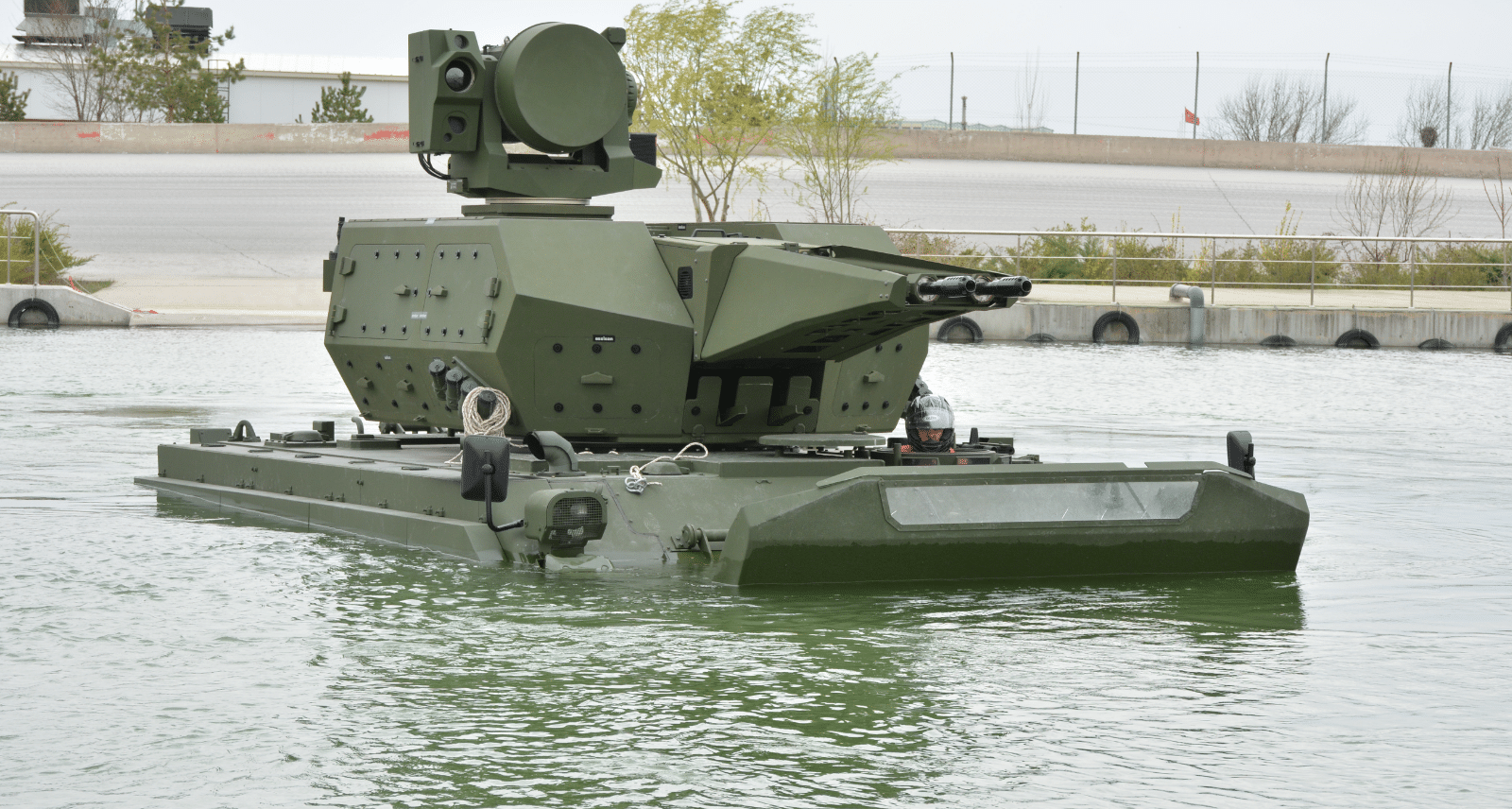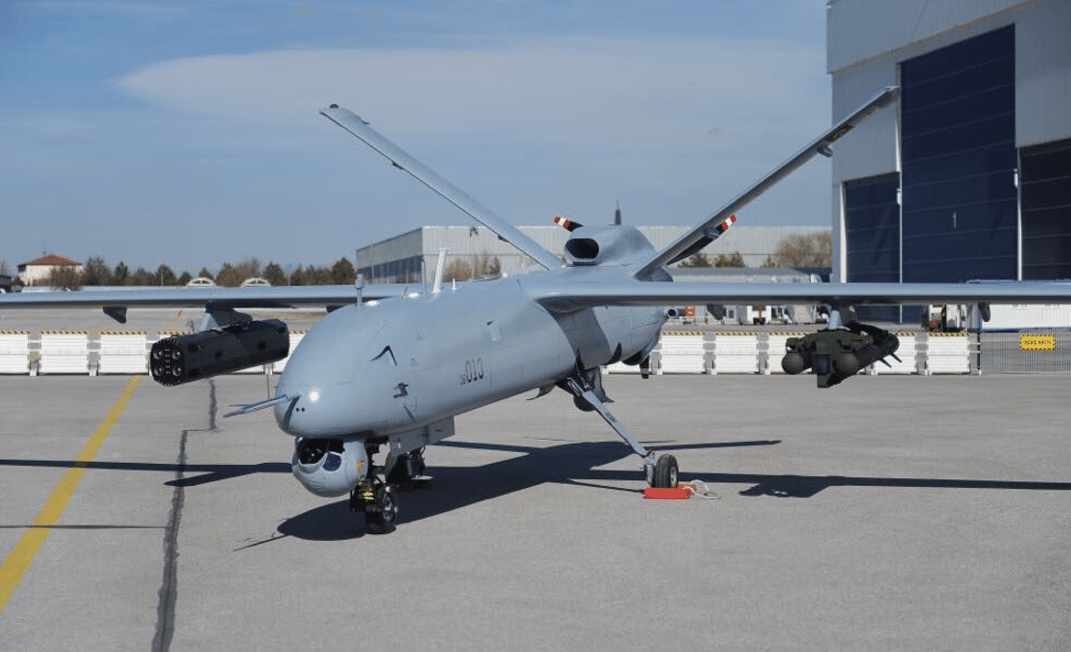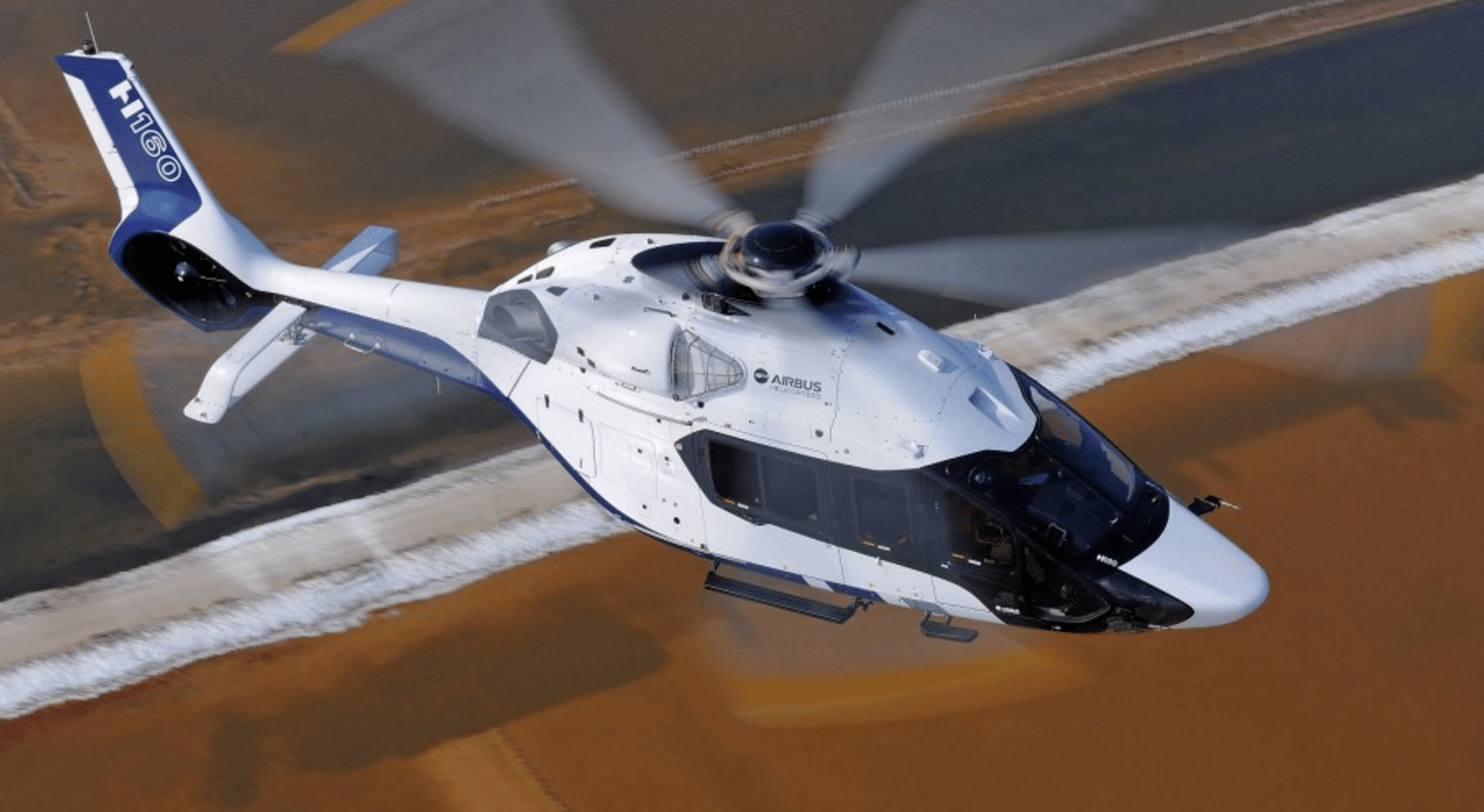2898Views 1Comment

Aselsan Korkut SPAAG enters production
The Aselsan Korkut self-propelled anti-air gun (SPAAG), a very short-range air defence system (V-SHORAD), entered production for the Turkish Armed Forces (TSK).
The Korkut SPAAG comprises of three twin-35 mm gun systems and a command and control (C2) vehicle. IHS Jane’s states that the cannons are Rheinmetall Air Defence 35 mm KDC cannons built under license in Turkey by the Mechanical and Chemical Industries Corporation (MKEK).
Target acquisition and tracking can be done through a 3D fire control radar and/or electro-optical (EO) tracking system. The EO system can be used in dense electronic countermeasures conditions.
Aselsan positions the Korkut as a fast-responding and automated VSHORAD solution for defence against low-flying aircraft – e.g. helicopters and drones – and air-to-surface munitions.
In December 2016, the Turkish Undersecretariat for Defence Industries (SSM) issued a contract to Aselsan, Turkey’s leading defence electronics vendor, to supply the Korkut.
Aselsan sub-contracted FNSS Savunma Sistemleri to produce its Armoured Combat Vehicle 30 (ACV-30) platform, which was designed for the Korkut and HİSAR-A short-range surface-to-air missile (SAM) system. The FNSS ACV-30 also serves as the Korkut’s C2 vehicle.
The SSM, Aselsan and FNSS initiated the Korkut program in June 2011. Testing of the Korkut SPAAGs and C2 system were completed in October 2016. As per FNSS, the first set of Turkish Army Korkut systems are scheduled for delivery in May 2018.
The Korkut’s carrying platform, the ACV-30, is marketed as an amphibious solution capable of a high payload capacity and large internal volume, which FNSS claims differentiates the Korkut VHSORAD system from the competition. Besides being mobile, the Korkut can be deployed on expeditionary missions from landing platform docks and other amphibious vessels.
The Korkut will form the TSK’s low-altitude air defence layer in conjunction with the Roketsan HİSAR-A, a short-range SAM system with a maximum range (at sea-level) of 15 km and maximum altitude of 5 km. The HİSAR-A is powered by a dual-pulse solid-propellant rocket, and is guided by a radar data-link assisted inertial navigation system (INS) with a terminal-stage imaging infrared (IIR) seeker.
MSI Turkish Defence Review reported (during IDEAS 2016) that Aselsan had marketed the Korkut system to the Pakistan Army. SSM official Mustafa Şeker told MSI that Pakistani evaluation teams visited Turkey to see the Korkut, and requested that it be sent to Pakistan for further tests. As of November 2016, Şeker said that the matter was being discussed with Pakistan. He added that a Korkut system could be sent to Pakistan once the TSK units roll out of the production line.
Notes & Comments:
Aselsan and FNSS achieved a high level of commonality between the Korkut and HİSAR-A, which is evident in the common vehicle (ACV-30), sensor equipment and C2 system. Commonality in parts is a valid approach for V/SHORAD systems, which many militaries need to be mobile and readily maintainable, especially when they are deployed with moving armoured formations.
It would be interesting if the Aselsan Mobile Search Radar, an X-band active phased-array system with a range of 75 km, could also be a radar option. This radar would provide the Korkut air defence network with strong ECCM qualities. Active electronically-scanned array (AESA) radars benefit from multiple transceiver modules (TRM), which can each emit radio wave signals at different frequencies. Granted, this would be excessive for just the SPAAG, though it should be sensible in the context of the HİSAR-A’s addition to the SHORAD system.



1 Comment
by Superior Shakeel
At first I read it as Orkut lol
I was like dang Google is into defense manufacturing now.